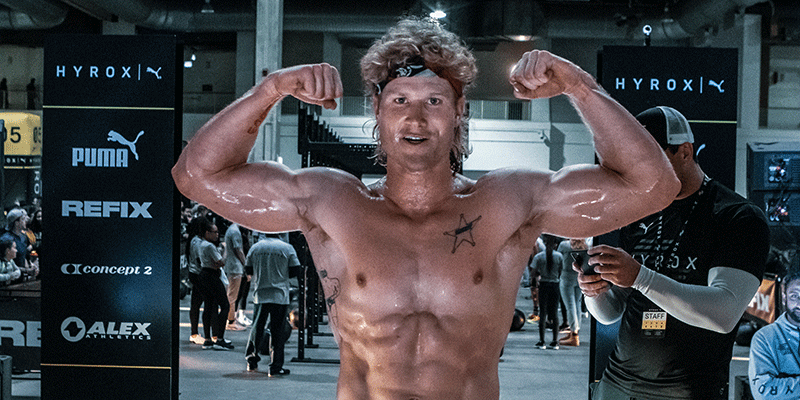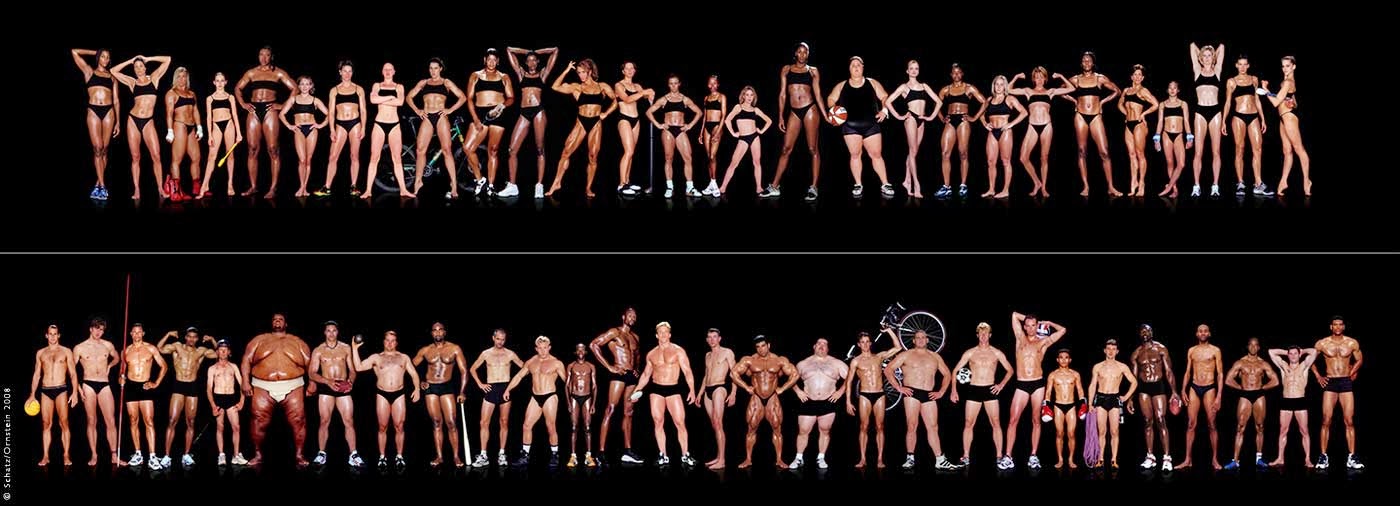What does athlete’s body look like?
The bodies of elite athletes are the result of good genetics, training, rest, and diet. A combination that is unattainable for most people.
At the same time, even athletes at their ideal competition weight can look different. One may be more chiseled, while another athlete may have more fat at their peak form.
Sprint to look like a sprinter

What is the ideal body fat level?
We commonly admire “chiseled” athletic bodies. Weight loss is associated with success and determination. Social media reinforces the notion that thinner is better. We see athletes in top form that is short-lived and sometimes unhealthy.
Thinner works, but only up to a point.
What do studies say?
One study on amateur runners (men) looked at the association between body fat percentage and marathon completion time.
The sample of runners was quite diverse:
- The average % fat of the runners was 16% (range 8-25%).
- Age ranged from 18 to 72 years.
- Running speed in training sessions ranged from 7.7 to 15.5 km/h.
- Number of years trained from 0.5 to 35 years.
What did they find?
17-18% body fat appears to be the threshold, according to this study, where body fat starts to be a hindrance to performance. At lower body fat percentages, running performance was related to the number of miles run per week, days trained, and pace during their pre-marathon runs.
Caution!
Some people naturally have more body fat, differently distributed body fat, and % body fat alone is not indicative of overall body condition.
“But after all, lighter runners run better! Look at the Ethiopian runners!”
Losing weight will improve performance in runners who have excess body fat, but trying to lose the last 2-3kg before a race doesn’t help. Not even for elite athletes.
Recently a study came out on 23 elite race-walkers that had a high rate of control. From their training to body composition measurements to food.
Over the course of 9 days, the walkers were divided into two groups. A control group and a weight loss group. After 9 days, both groups had a day where they replenished their energy and glycogen stores. This was followed by a 10km race.
The results?
Both groups improved their performances over the 9 days.
Control group
- their weight changed minimally
- Improved performance by 4.5% ± 4.1%, approx. 127s.
Weight loss group:
- They lost approx. 2kg (1.6kg body fat) – 3% of their total body weight
- improved performance by 3.5% ± 1.8%, approx. 92 s.
Another study on 50 elite cyclists showed:
- All riders believed that achieving a minimum body weight, especially a low percentage of body fat, should be critical for maximal performance. However, there was no significant correlation between body fat percentage and performance (!)
- Cyclists with chronically low caloric intake did have lower % body fat, but they also had reduced performance at higher training loads, lower testosterone levels, and lower bone density!
What to take from this?
Even if we assume that a relatively lean runner would reduce weight, it is unlikely to help him or her significantly improve performance. Realistically, when losing weight, not only is fat lost, but muscle mass, water and glycogen stores are lost at the same time! This may ultimately have a greater negative effect than the potential benefit of a small weight loss.
A lighter runner is not necessarily a better one. Dropping the last 2-3 kg will not add to performance, while the weight loss itself may worsen overall performance.
Maybe that’s why we see carb-loading before a marathon and not weight-cutting like in MMA or bodybuilding 😉 .
For relatively lean athletes, it’s important to focus on training, not trying to drop 1% fat at any cost.
Focus on performance! This can mean increasing strength, and muscle mass, improving overall nutrition, fueling, and sleep.
Megan Markoff, CrossFit athlete
The Trade-offs








